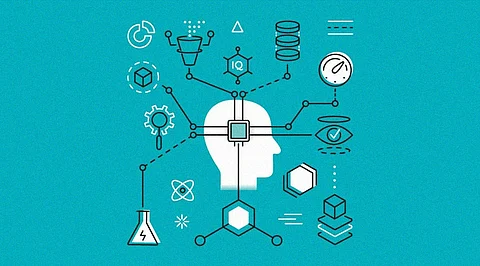
- Insights
- Cryptocurrencies
- Stocks
- White Papers
- Industry
- Geography
- Insights
- Cryptocurrencies
- Stocks
- White Papers
- Industry
- Geography


If you've been working with or reading about analytics, you've probably come across the term predictive analytics. Predictive analytics models, which are now highly sought-after in the business, are meant to evaluate past data, find patterns, notice trends, and utilize that information to make predictions about future trends. Whereas the economic benefit of predictive analytics is frequently discussed, little attention is paid to how they are produced. As a result, the focus of this blog article will be on the types and working of predictive models.
The outliers model, unlike the categorization and prediction models, works with aberrant data items within a dataset. Anomaly data, as the name indicates, is data that detracts from the norm. It operates by detecting anomalous data, either alone or in conjunction with other categories and numbers. Outlier models are valuable in areas such as retail and banking, where spotting abnormalities may save businesses millions of dollars. Outlier models may be used to discover anomalies, which is one of the reasons predictive analytics models are so good at detecting fraud. Because fraud is a departure from the norm, an outlier model has a better chance of predicting it before it happens. When recognizing a fraudulent transaction, for instance, the outlier model might include the sum of money lost, location, buy history, time, and nature of the transaction. Because of their tight relationship to anomaly data, outlier models are extremely valuable.
Outliers focus on anomalous data, whereas classification and forecast models focus on previous data. The time series model is concerned with data in which time is the essential input. The time series model works by combining multiple data points (from the prior year's data) to create a numerical measure that predicts trends over a certain period.
A Time-Series predictive analytics model is required if organizations wish to examine how a specific variable evolves. For instance, if a small business owner wishes to track sales over the last four quarters, he or she will need to use a Time Series model. A Time-Series model outperforms traditional ways of estimating the development of a variable because it may predict for several areas or projects at the same time or focusing on a particular region or project, depending on the requirements of the organization. Moreover, it may account for extraneous factors that may alter the variables, such as seasons.
One of the most frequent predictive analytics models is the projection model. It handles measurement value prediction by predicting the values of fresh data based on past data learnings. It is frequently used to produce numerical numbers from historical data when none can be obtained. One of predictive analytics' most powerful features is the capacity to enter numerous factors. As a result, they are one of the most commonly utilized predictive analytics models. They are utilized in a variety of sectors and for a variety of commercial reasons. For instance, a contact center may use forecast analytics to anticipate how many support calls it will receive in a day, and a shoe store might use forecast analytics to determine the inventory needed for the forthcoming sales season. Forecast models are often used because they are quite flexible.
Classification models are among the most frequent predictive analytics models. These models classify information based on previous data. Classification models are employed in a variety of sectors because they are simple to retrain with fresh data and may give a wide analysis for addressing queries. Classification models may be utilized in a variety of industries, including banking and retail, which illustrates why they are so widely employed in comparison to other models.
The clustering model divides data into groups based on shared characteristics. The capacity to separate data into distinct datasets depending on specified qualities is especially beneficial in some applications, such as marketing. Marketers, for example, can segment a potential client base based on shared characteristics. It employs two kinds of clustering: hard and soft clustering. Each data point is classified as belonging to a data cluster or not via hard clustering. When forming a cluster, soft clustering distributes data probability.
Predictive analytics models have advantages and disadvantages and are best utilized for certain purposes. One of the most significant advantages of all models is that they are reusable and may be modified to have common business principles. Algorithms can be used to reuse and train a model.
The analytical models execute one or more algorithms on the data set that will be used to make the forecast. It is a time-consuming procedure since the model must be trained. Multiple models are sometimes employed on the same data set before finding one that meets business requirements. It is crucial to highlight that predictive analytics models are iterative. Pre-processing is the first step, followed by data mining to identify business goals and data preparation. Following the completion of preparation, data is modeled, reviewed, and eventually deployed. When the procedure is finished, it is iterated upon again.
Data algorithms play a significant part in this study since they are utilized in data mining and statistical analysis to aid in the identification of trends and patterns in data. The analytics model incorporates various types of algorithms to accomplish particular duties.
Because of the enormous economic value they produce, predictive analytics models will play an important part in corporate operations in the future. While they are not without flaws, the value they provide to organizations, both public and private, is enormous. Organizations may use predictive analytics to take preemptive action in several tasks. Predictive analytics models make fraud prevention in banks, catastrophe protection for governments, and exquisite marketing campaigns a reality, and that is why they will be invaluable property in the future.
